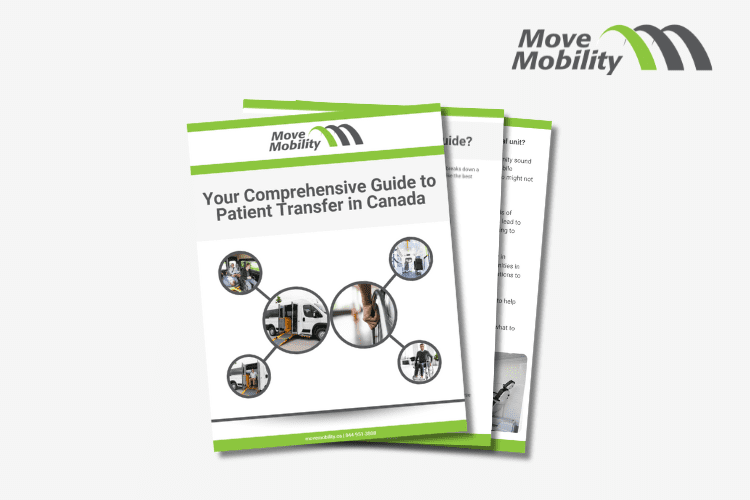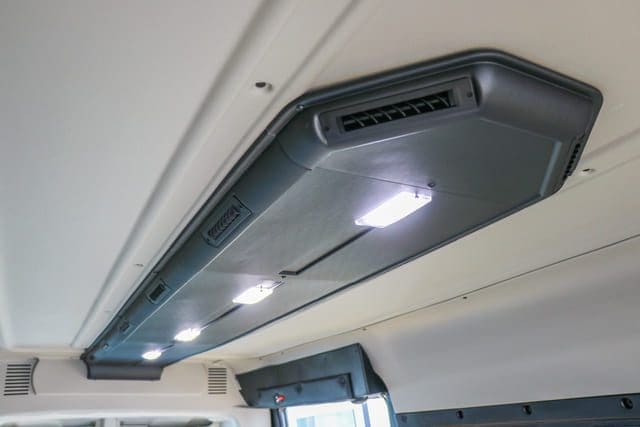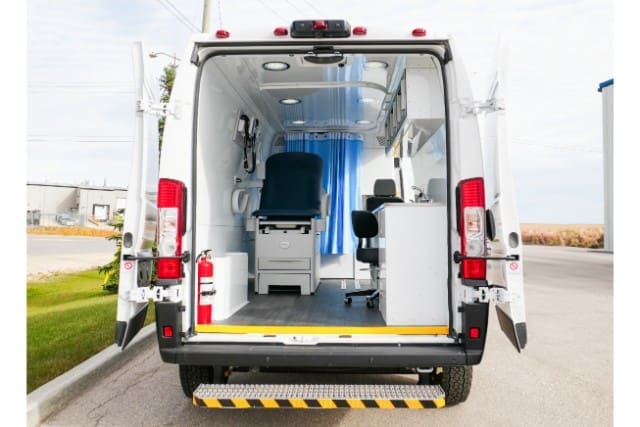Ever wonder if a wheelchair van ramp can really hold the weight you need it to? It’s a real concern, and a big one. You’re transporting people who rely on power chairs, sometimes with support staff and gear onboard. That adds up. And if the ramp can’t handle it, you’re not just risking damage.
You’re risking:
- Injury: A weak ramp can collapse or break.
- Delays: If a ramp fails, so does the appointment.
- Loss of trust: Families and clients count on you.
The gap is that you want to help people, but you’re unsure what your van ramp can safely support. You want to be confident that what you buy is strong, safe, and built for real-world use.
The desired outcome?
- Peace of mind knowing your ramp handles the weight.
- Confidence that you’re making the right call for your team.
- Long-term safety and reliability.
At MoveMobility, we’ve built accessible vans in Canada for 20+ years. Our vehicles have the National Safety Mark on them, showcasing their adherence to strict safety standards. While we’re proud of the work we do, we know we’re not your only choice. We’re here to help, not pitch.
In this article, you’ll learn about the weight capacity of both manual and powered wheelchair van ramps. By the end, we hope you’ll have some more peace of mind in knowing how sturdy these ramps are.
What’s the weight capacity of a manual wheelchair van ramp?
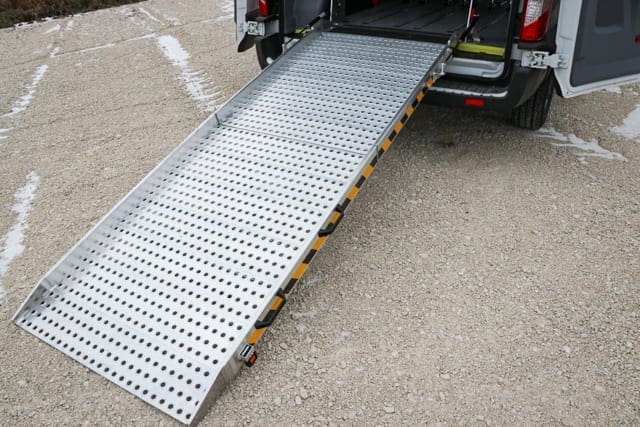
If your clients will be using a manual wheelchair van ramp, you’re probably asking: Can it handle the weight we deal with every day? The short answer: Yes, up to 600 lbs.
That means it’s built strong enough to support a person in a wheelchair and a caregiver, or even a heavier powered chair. But weight is just one part of the story. These ramps are built for everyday work, and they’re tough.
Here’s what you get with a manual wheelchair van ramp:
- 600 lb capacity: Strong enough for most powered wheelchairs and users.
- Spring-assisted design: Lifting or lowering the ramp doesn’t take much effort.
- Built for Canadian weather: No electrical parts that freeze in the cold.
- Anti-slip surface: Adds grip in snow, rain, or slush.
- Heavy-duty finish: Holds up against scrapes, snow boots, and rough use.
- No waiting: Just open the door, drop the ramp, and go.
- Low maintenance: Fewer moving parts means fewer problems.
One detail people love is the integrated handle. It’s built right into the ramp, so there’s nothing sticking out to snap off or break. It makes the ramp feel solid, easy to grab, and easy to use.
Manual ramps are a smart fit for teams who don’t want to deal with electrical issues or wait around for lifts. If reliability matters more than buttons and tech, this could be your best choice.
Next, let’s talk about powered ramps and how they compare in weight limits and features.
What’s the weight capacity of powered wheelchair van ramps?
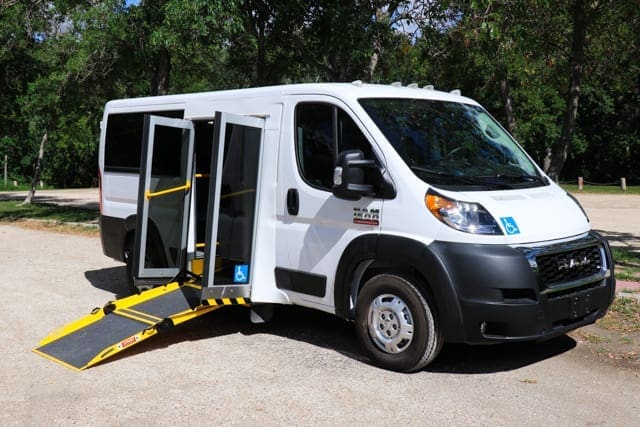
If you’re looking for more convenience, a powered wheelchair van ramp might be your answer. These ramps can handle up to 1,000 lbs, giving you extra strength for heavier power chairs, equipment, or support staff.
Powered ramps run on an electronic, chain-driven system. With just a push of a button, the ramp folds and unfolds automatically. That means less lifting, no heavy pushing, and one less physical task for your drivers.
Why are powered ramps a good option?
- 1,000 lb capacity: Ideal for larger wheelchairs or extra gear.
- Push-button operation: Makes life easier for drivers and staff.
- Independence for users: Some wheelchair users can enter on their own.
- Clear doorway: The ramp folds out of the way, keeping the entry space open.
- Walk-in access: No need to deploy the ramp if someone’s walking in.
- Good for walkers and canes: Not just for wheelchair use.
One of the biggest advantages? Freedom. For users who want to get in and out on their own, a powered ramp makes that possible.
At MoveMobility, all of our P-Series vans can be built with a powered ramp. These vehicles are designed to be flexible and accessible for a wide range of mobility needs.
Check out what the P-Series vans look like.
Next up, let’s break down how to choose the right wheelchair ramp for van setups based on your organization’s needs and the clients you serve.
What can happen if you choose the wrong wheelchair van ramp?
Getting the wrong wheelchair van ramp can cause real problems for your team and the people you serve.
If the ramp can’t support the actual weight you’re moving every day, things can go sideways fast. You might’ve heard stories from teams who didn’t realize a power chair and caregiver together could exceed 600 lbs. That kind of oversight can put people at risk and take a vehicle out of service.
Here are a few things that can go wrong:
- Ramp failure or bending: This puts users and staff in danger.
- Frequent repairs: Wastes time and money you can’t afford to lose.
- Delays in transport: Missed appointments, frustrated clients.
- Team burnout: Staff struggling with ramps not suited to their workload.
- Loss of trust: Families rely on you. One bad incident can leave a lasting impression.
It’s easy to think, “We’ll make it work”, but that kind of thinking wears thin over time. Picking a ramp that doesn’t match the weight capacity of your wheelchair users often leads to more problems down the road.
The good news? You don’t have to guess. Once you know who you’re transporting and what kind of use your van sees daily, choosing the right ramp becomes a whole lot easier. Let’s take a closer look at that.
How do you choose the right wheelchair van ramp?
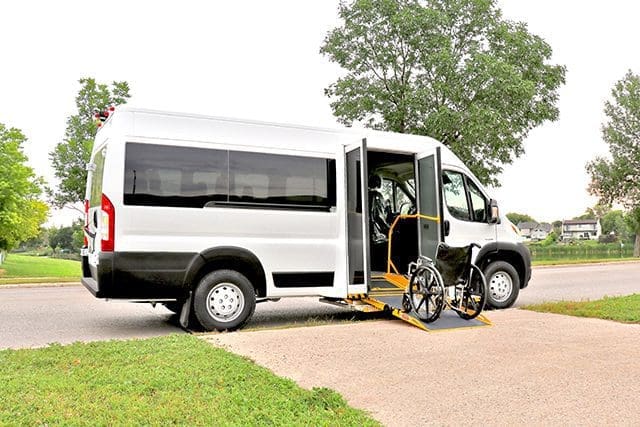
Picking the right wheelchair van ramp is about more than just weight; it’s about people. The people you help every day, the drivers who lift, guide, and support them, and the real-life situations you face on the road.
You’ve got two solid choices: Manual wheelchair van ramps and powered wheelchair van ramps. Each one fits different needs, kind of like winter boots vs. running shoes. They’ll both get you there, but the best pick depends on how you plan to use them.
Here’s a simple breakdown to help you decide:
A manual wheelchair ramp for the van might be best if:
- You serve clients using lightweight manual chairs.
- Your team prefers fewer moving parts (less that can break).
- You operate in colder, rural areas where electricity can sometimes be finicky.
- You want something fast, simple, and reliable.
- You’re okay with a bit of elbow grease now and then.
Think of it like the trusty pickup truck of ramps that’s built tough, has low maintenance, and is built to take some serious use.
A powered vehicle wheelchair ramp might be better if:
- You regularly transport people in heavy power chairs.
- Clients board independently without help from a caregiver.
- You run tight schedules and want quicker boarding.
- You serve a mix of passengers, including those walking or using canes.
- Your staff would prefer not to fold up a ramp.
And don’t forget: The weight capacity of the wheelchair van ramp really matters. If your clients roll in with 300-lb power chairs and extra gear, a 600-lb manual ramp might not cut it. That’s where the 1,000-lb powered ramp steps up.
At the end of the day, the right ramp helps your team move quicker, safer, and with fewer headaches.
Need help deciding on the right wheelchair van ramp?
You came here because you had a real concern: How much weight can a wheelchair van ramp actually hold? And what happens if it can’t? You’re responsible for keeping your clients safe, your team supported, and your vehicles working day in and day out. That kind of pressure deserves clear answers.
Here’s what you now know:
- Manual ramps hold up to 600 lbs and are great for simple, tough, low-maintenance setups.
- Powered ramps hold up to 1,000 lbs and offer ease of use, independence, and flexibility.
- The best choice depends on your clients, your staff, and how your vehicle is used daily.
At MoveMobility, we’ve helped hundreds of organizations across Canada find the right accessible vehicle for their unique needs. Every ramp, seat, and layout we build is designed with safety and real-life use in mind. We know this industry because we live it, with boots on the ground, real conversations, and feedback from the people doing the work. We treat your experience like it’s more than just buying a van. You’re investing in dignity, freedom, and access, and we take that seriously.
Have questions? Click the button below to talk to a mobility expert who actually understands your world.
If you’re not quite ready to chat yet, we’ve got more resources to help you keep learning.
From here, you might be wondering how wheelchair van ramps compare to lifts. Check out our comparison article or watch the video below to learn more about that.
After that, we have two other articles you should read on manual ramps and powered ramps for wheelchair vans.



